A year of keeping chickens – 12 things I’ve learnt
As I mentioned in my blog birthday post the other day, it’s just about a year since we got chickens too – it’ll be a year on Thursday to be exact but what’s a day or two between friends? ;)
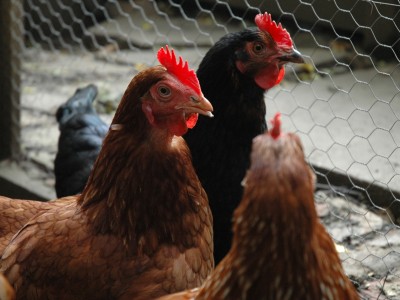
Before we went to buy the red four, I hadn’t had much hands-on experience with chickens – I’d read a lot of course, and gone on a LILI course (which was very good – although I think I asked about ten times as many questions as everyone else), but aside from that, I was new to birds.
Things I’ve learnt in the last year
1. ISA Browns are awesome for first time chicken owners
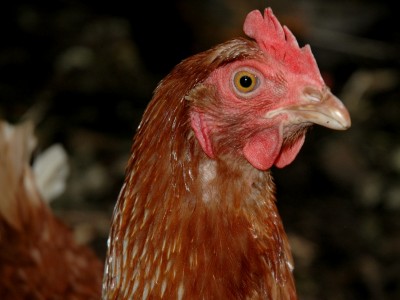
We got the girls from Edward Boothman near Silsden – he advised us to get the ISA Browns as they were good first-timer birds, and how right he was. Sure, they’re not the most exciting birds to look at but aside from Lime’s badly timed moult last winter, they’ve been incredibly easy to manage, are friendly and very productive. If we had more space, I’d prefer more variety but here I’m tempted to stick with good old ISAs – even their fellow hybrids, the Black Rocks have been more temperamental: Blacks here is pretty friendly most of the time but together, her and Ginger bicker like sugar-rushing eight year olds.
2. In comparison, the pure breeds are a PITA
I am very prepared to accept that we had bad luck, or did something wrong, but compared to the ISAs, the two pure breeds we’ve had – a Minorcan and a Leghorn – have been pains in the bum. The Minorcan died during her second night here (although I do think I did a lot of things wrong) and Buff the Leghorn was very flighty (so hard to health check etc), took ages to start laying (albeit possibly because she came of age over winter) and was noisy (because she was easily stressed) before her untimely demise earlier this month.
They were both very pretty and I do like the idea of supporting traditional breeds rather than the generic egg machines we have now, but they were a lot more expensive, more effort and not an efficient member of a small team.
3. Chickens poo all sorts of different shapes & colours of poo
This is one of my favourite/most visited sites on the internet these days. Oh the variety!
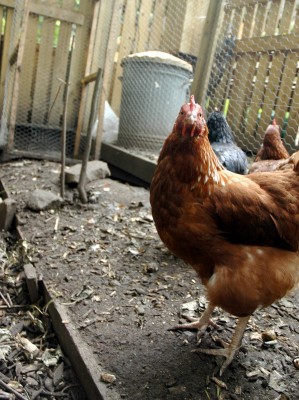
The chickens don’t like it when I talk about their poop on the internetz.
4. Our coop is a bit too big for our space/requirements
I mentioned this when we were considering getting our additional team members in the late autumn last year – our four ISAs were rattling around the coop on their own. The coop apparently is fine for 15 birds (although we wouldn’t keep any more than 12 in there) – we went for a bigger one to start with to save buying a small one then having to upgrade if we wanted to expand our tribe – but it was arguable too big for them. The four on their own may have struggled to keep warm in there over winter. If I was doing it again, I’d get a slightly smaller one.
5. Conversely, having drinkers & feeders that are a bit too big is better than a bit too small
I like them having at least 1.5-2 days of food and water down at any one time – I do go down to check on them every day but not necessarily at the same time every day so it’s good to know that they’re not starving/getting thirsty if I go down in the afternoon instead of the morning. I also like having more than one drinker and more than one feeder – that way if the cool kids are at one, the birds lower down in the pecking order can eat/drink at the other without being harassed. This was important when we introduced the second lot of birds.
6. Raising up the coop was a good idea
We decided to build a platform for the coop to raise it to about 18″/45cm off the ground – it makes it easier to clean/access, makes it less likely that vermin will burrow in and means we have somewhere dry to put the main feeder/drinker — and somewhere that stays bone dry for dust baths. We almost didn’t do it because of the extra work/height required but I’m very glad we did.
7. Coop loves and hates
We have a shop-bought coop because it took us long enough to make the run while working and doing everything on the new house, we’d never have got around to making a coop as well. However, next time, I’d be tempted to make our own – and having lived with this one for a year, I know what I’d do differently.
Our current coop is wooden, made from slats – the grooves along the floor get clogged with wood shavings’ dust, poo and (when we had our worst infestation) mites. I’d have a solid, single piece floor, ideally something plastic or water-resistant laminate to make it easier to clean.
The floor of the sleeping area has a lip (used to support the walls) all around the rim of the base, which means I have to scoop out all the shavings, rather than just brushing them out into a bucket. I’d try to get rid of that if possible – makes cleaning take longer and provides extra nooks and crannies for red mites. (I might add a fake floor to this coop, on top of the lip with insulation in the gap inbetween, to solve both of these problems.)
Similarly, there is a lip in the nest boxes (under the flapping open door) which causes more cleaning-out problems. I’ve got around this mostly by using newspaper liners underneath the straw nesting material but there is still a lot of dust in there which is awkward to get out.
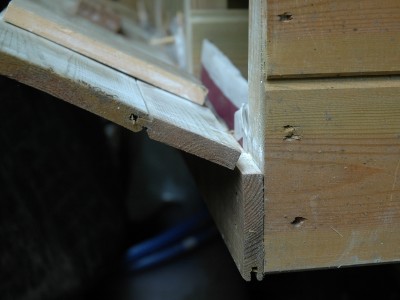
Generally, I’d make it out of bigger pieces of wood rather than tongue-and-groove slats – sure, they look pretty but they generally add more grooves and require more supports than I’d imagine larger pieces of wood would need, and that means more spaces for red mites.
On the plus side though, I like being able to access the nest boxes without having to go into the run (which is handy when I’m down there barefoot), to be able to open up the full side of the coop for easier cleaning (and to have another door on the front), and it does look pretty nice, compared to the type of homemade coop we’d have made.
8. The automatic pophole door is pretty much the best £100 I’ve ever spent
Seriously. Before we got it, I used to feel guilty every time I had a lie-in past dawn – and in my pre-chicken life, lie-ins past noon were not uncommon. Once we realised we could trust the automatic door, chicken keeping suddenly got a whole lot easier — as I mentioned above, I can feed/water/collect eggs at my convenience now and it’s easier for other people to look after them if we’re away, and, most importantly, I think they’re happier too because they don’t have to wait for a human to appear before they can have their breakfast.
9. Seven six four eggs a day is a LOT
We started getting four eggs a day almost immediately after getting the girls last summer – that was a lot. Getting six or seven eggs a day, as we were doing in the early spring, was almost ridiculous. We got 200 eggs in March – that’s a lot of eggs! We are in a position to give them away but if we weren’t, I think two or three birds, producing about a dozen eggs a week, would be more than enough for us as a couple – there are advantages of scale (keeping six isn’t any much work than keeping two really) but it would be a waste of money to keep more than we’d need.
Different coloured eggs though are more valuable than just for variety in on the egg roller – it makes it really easy to work out who is laying and who isn’t, which means it’s easier to identify healthy problems etc.
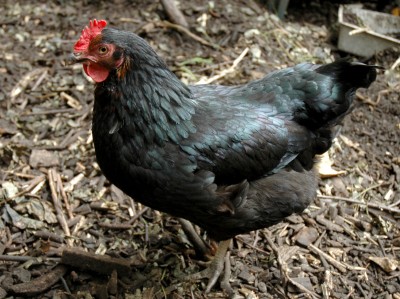
10. It’s cold out there in winter
I was surprised by how much effort was needed in the winter – although I think it was partly self-inflicted because I *could* do it during the day. I had to start getting up early (for me) – they were my first morning chore again, to defrost their drinkers and take them a warming porridge (their pellets mixed with warm water and poultry spice). The self-inflicted work was taking them more porridge and more warm water during the day. They were spending more time in the coop during the long nights too, so had to be cleaned out a little more often – and more than once, that included chipping frozen poo off the floor. Joy.
It wasn’t really that much work but compared to normal (which is no more than 30mins or so a week), it was – and those mornings were very cold.
11. They can be quite noisy at times
Generally, they’re pretty quiet – just gentle clucking that you can hardly hear as soon as you’ve left the immediate vicinity of the run – but when they’re kicking off or want to announce they’ve just laid, they’re quite loud. Thankfully it’s not cockerel-early, it rarely earlier than 8am, but when we have our bedroom windows open, it’s quite loud and persistent for a good minute or two. If I’d known they could be quite noisy, I think I might have talked to our neighbours more about it before getting them.
12. Chickens are lots of fun
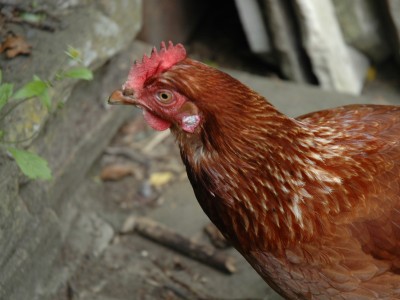
All in all though, they’re great fun. They’re such strange little creatures but I don’t think I’m anthropomorphising them too much to say some of them have definite personalities: Lime the chicken is very brave and cheeky, Mrs Mauve is subject to moods, Buff was always a stroppy miss. I intend to go down quickly to drop off some kitchen scraps but end up staying for ages, just watching them cluck around. Having them in the garden is guaranteed to get us grinning too.
If you’ve got chickens, what lessons have you learnt since you started? What would you do differently if you were starting now?






Great post … I’ll have a think and post something on my blog! http://henkeeper.wordpress.com/
We have two chickens for almost two years now. The first problem was when we got them. It took me months before I realised that our beautiful and easy-going chickens would never lay any eggs, because they were two cocks. And that the noise they made was not extreme hens clucking early in the morning, but real cock-a-doodle-doo. It was a hard lesson and our neighbors had almost banned us.
The cocks were changed for two hens. But one of the two is quite laborious. She is broody almost every month as soon as the weather is a bit better. At first we tried to just let her or push her gently from the nest box to get her eating and walking around for a few minutes. But it could last for 6 weeks or longer. Now we put her in isolation for three days in an open cage and it’s over for a few weeks. However it took quite a time before she starts laying again and then after a few days she’s broody again. Besides that, she is sometimes picking in her own eggs. We should eat her and get another one. But we’re not that brave and I’m certainly not sure if our daughter could cope with that. So, she will probably stay till the end of her life.
The other one is fine, productive and without any special characteristics.
So, next time I prefer to have new chickens on approval for a few months or so. :-)
We’ve learnt a lot but I don’t think I’d change anything about how we started. I think that some things you just have to learn from experience. We read all the books, websites, blogs that we could and life still throws curve balls at you at chicken height :) Oh, and your poo link? One of my favourites too – haha!
I’ve had Warrens and various little brown hen hybrids, Black Rocks, Bluebelles (very pretty), Light Sussex, Black Sussex… I really didn’t like the Black Rocks. Unfriendly, hard to handle and not so much fun. My farmer friend says exactly the same. My favourites have got to be my little brown hens as they are so friendly and easy to catch and check over. Every set of them we’ve had have been good. They get so excited when they see me coming with a bowl in my hands and make me laugh. They get my vote every time.
I just love my little hens!
We have a bought coop and run (our first one) and homemade ones. There are pros and cons for both. The decision probably comes down to time and money. Our homemade ones turned out very heavy and are an absolute pain to move on to fresh ground.
I got my three ex-bats just over a year ago and learned quickly that they are the masters of escape. Houdini has nothing on them! Lots of wing clipping and a 4 foot fence later, we’ve reached an amicable stand-off. And I also didn’t realise at the start how fond of them I would become. We lost our first one a couple of weeks ago – she just died overnight – and I felt more upset than I expected too. Our garden looks so odd with only 2 chickens running around now.
think the only thing i’d do differently is position the coop so that i could alternate between one side of the run and the other in an effort to allow some grass to regrow. it’s got a bit of a parched earth look about it these days. trying to talk the council into giving us the (untended, 7 foot high with weeds)allotment next to us so we can run them on that is proving to be a non-starter.
oh and i wouldn’t have ex battery ones again, much as i enjoyed the feeling of giving them a new lease of life i feel they took advantage of me by not laying any eggs and living for bloody ages. glad to see the back of em.
LB: I’ll keep an eye out for it!
Petra: oh no, what bad chicken luck you’ve had! at least your other girl is a good one!
Mo: the poo link is one of those “when I was a kid, I never thought I’d grow up to do that” type of things for me ;)
Jo: that’s interesting about the homemade ones – we have our run/coop in a static space at the moment so weight is less of an issue but something to consider for future arks.
Jules: aww, sorry to hear about your third girl. :(
Without a roof on our run, we’d have lost our chickens to the woods a long time ago – not the foxes, just the lure of the woods! When they do get a bit of freedom, they’re off! :)
john b: I’ve been hesitant about getting ex-bats after your experience – we might get them one day (and from the outset consider them pets) but probably not here where space is at more of a premium. I also see the value of doing a rotation thing – definitely something I’d like to include in future runs.
Loving the ‘poo link’ and yet another interesting post from you. Our plan is to get some ex bats once we have settled into our ‘new life’ and I have found work. The one thing that I have decided is not to have a wooden coop, as nice as they look. I’ll probably go for a plastic one as I have heard they are much easier to keep clean – although a lot more expensive!
I’ve heard that some people have problems with plastic ones too – mites/dirt in the pitting on the plastic, even on Omlet ones – but I think in general, yes, much easier to keep clean.
Steel Kitten just got a plastic coop I’ve not seen before – a green frog. I might be tempted by one of those if we need a new (smaller) coop.
What an interesting article, and someone talking plain English and actually ‘telling the truth’ about keeping these gorgeous compelling birds!
I have had my 3 hens for only just over 7 months, they were quite young when we got them, 2 x-breed light sussex at 15weeks old and a gorgeous little Orpington at just 8 weeks old, it took a while before they started to lay, but oh what joy and suprise when they did!, I know who has laid and when as the 2 x-sussex lay diffirent colours, one lays blue eggs the other khaki green and my Orpington lays flesh coloured/light brown eggs, I also have leared such a lot in this past 7 months, but the 2 things I have been suprised with are two things you have mentioned in your article, first the way they can ‘kick off’ and be quite noisy!!!!!!! it suprised me how vocal they can be and I made them worse by running out to them every time they kicked up a racket giving them a treat so as not to upset the neighbours, then I realised they were making the fuss on purpose to get me out there with a treat!!!!!!!! they are not stupid animals, they are very intelligent, dont undersetimate them, also the extra work needed in wet weather and winter, we have had a terrible year with rain not just in the winter all through the year, I have kept the run area my husband built clean and quite dry by using woodchip, and they have an indoor run that is covered and the floor is sharp sand, this is great as its always clean (I pick up the fresh poo every day and rake it over) and they can bathe in it, its a realy good idea I would always advice anyone who asked to use sand, but with all the wet weather weve had the garden is sodden, I love to let them out to freerange as we are fenced off and I keep my eagle eye on them all the time, but Im having to give them limited access at the moment as they are getting too dirty and wet and reducing my lawn to a right mess!, so for their own good they are getting an hour in the morning and a couple of hours in the afternoon, before being put back in to their run, Im realy happy with them and wouldnt be without them, I do think some people will end up getting chickens and only having them for a short while when realisation kicks in! and I think more people should be honest like we are being and say it as it is, if you realy want to keep them you will get over the obsticles and carry on as we know they are worth it, but if you have been led to beleive by people (I was told this a lot before I got my girls).”oh they are so easy to look after, just lock them up at night and they look after themselves” – Well, Im sorry but no animal is capable of looking after themselves, and the humble chicken needs a lot more care than I ever imagined, but in return I get so much more in enjoyment from them than anyone would ever have been able to make me understand, this you have to find out for yourself.
Thanks for the article, now youve got me started!